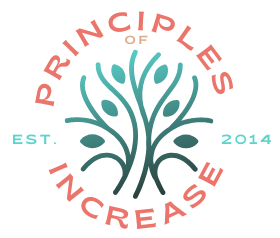
7 Hacks to Learn Another Language Quickly & Easily
For many adults, the dream of speaking another language can seem daunting, particularly when life is already bustling with work and personal commitments. However, with the right strategies and mindset, learning a new language quickly and effectively is achievable, even for those well into adulthood. This guide will explore various methods to aid you in your linguistic journey, pulling from both traditional academic experiences and more immersive, modern approaches.
Traditional academic learning vs. full immersion
Academic study is one of the most structured ways to learn a language. My personal experience involved formal Spanish language study since the 7th grade, which provided a solid foundation in grammar and vocabulary. This method emphasizes a detailed understanding of linguistic rules, giving me strong reading and writing skills very early on.
However, I found this approach prioritized theory and an “academic approach” over practical communication. Since I didn’t have much real-world experience, it delayed my verbal proficiency for quite some time.
I should also note that I started learning languages in the 90s when there wasn’t as much access to technology to help you learn languages. The internet was still new, and there weren’t massive amounts of free content or apps that could help you learn a language. If you wanted to be fluent, you likely had to commit to living where your target language was spoken, which was, again, difficult if you weren’t a digital nomad or already had connections.
I wish these things were at my fingertips, but that just wasn’t my reality. Either way, I’m still happy with the outcome, even if it was slow.
Although this approach requires a great time commitment, the benefits include a comprehensive grasp of language mechanics that can serve as a valuable base for further fluency development.
1) Ways to practice the immersion method of learning a language
Even though they say learning a language as an adult is difficult, I’m ready to prove that it’s possible! Thankfully, I have more access to tools that support The key to rapid language acquisition lies in immersion.
During my time in Puerto Rico, my Spanish abilities advanced dramatically because I was constantly surrounded by native speakers. Immersing yourself in the environment where your target language is spoken remains one of the most effective ways to enhance fluency.
Short of relocating, you can simulate this experience by resetting your devices to your target language, engaging with native content, and creating opportunities for daily interaction. For instance, switching your phone’s language settings can integrate language practice into everyday activities, a seamless yet powerful adjustment.
As someone who’s learned Spanish in a very structured, academic way, I can say that this approach can still give you language mastery but requires you to persevere when things get frustrating. As someone who’s learning French in a more immersive way, I can say that this approach will feel like baptism by fire, but the more you lean into it, the faster you’ll develop fluency.
2) Listenin, listen, listen!
In the beginning, listening will be the bulk of your journey to rapid comprehension. I say spend 80% of your time listening and 20% speaking in this stage. Believe me, fluid speaking will soon follow!
After all, this is how it works with babies and toddlers. They spend time hearing words for quite some time, then one day, BAM! They start talking and are typically pretty conversational with decent diction by age three or four.
To start, try consuming content that interests you—be it travel and gastronomy videos, podcasts, or even religious discussions. This way, you can improve your comprehension skills while keeping learning enjoyable.
Also, remember to add instructional content like grammar and vocabulary lessons in your target language to reinforce learning further. For YouTube videos, I turn on subtitles (in the target language, not English!). When necessary, I slow down the speed of videos until I can understand them at a normal pace.
3) Start talking, even if it’s to yourself
Developing speaking skills necessitates regular conversation practice. While finding conversation partners in a non-native environment might seem challenging, technology bridges this gap with various language exchange apps.
Platforms like HelloTalk connect learners globally, providing opportunities to converse with native speakers for FREE. Though it’s easy to connect with people here and set up language practice sessions, I find participating in chat rooms with dialogues in my target language is also very helpful. This activity gives you real-world practice, improving both listening and speaking skills.
4) Leverage social media to learn a language
Turn your scrolling time into learning time. Create a separate Instagram or Twitter account and consume content only in your target language. Most platforms also have a translate button to help you understand audio, posts, captions, and comments, a great vocabulary-building tool. Whether you’re interested in tourism, travel tips, or fitness, consuming content in your target language during daily scrolling sessions can transform casual browsing into productive learning.
5) Use your phone to learn
Change the language on your phone to your target language. This way, you are seeing it every single day. Learn to ask your digital assistant about the weather, the date or where the closest pharmacy is. It might take a while to master the pronunciation before it understands you, but it’s a great way to practice your conversational skills!
6) Consider professional lessons or apps
As your confidence grows, consider investing in structured lessons or apps. Services like Duolingo and Rosetta Stone offer interactive language study lessons that can also fast-track your success. Although personal lessons and apps might come at a cost, their tailored approach can accelerate progress and confirm your commitment to language proficiency.
7) Travel where your target language is spoken
Finally, nothing beats practicing a language in its native setting. Planning trips to countries where your target language is predominant solidifies learning and offers firsthand cultural experiences. One way to travel on an extended basis is to try out house-sitting apps or home swap apps. Personally, I just tried HomeExchange, and I’m excited to see if it will work for my upcoming travel plans for much longer stays.
Traveling to locations like Paris has refined my French skills and motivated me to continue my language-learning journey, so I’d definitely recommend traveling as much as possible to meet your language-learning goals!



